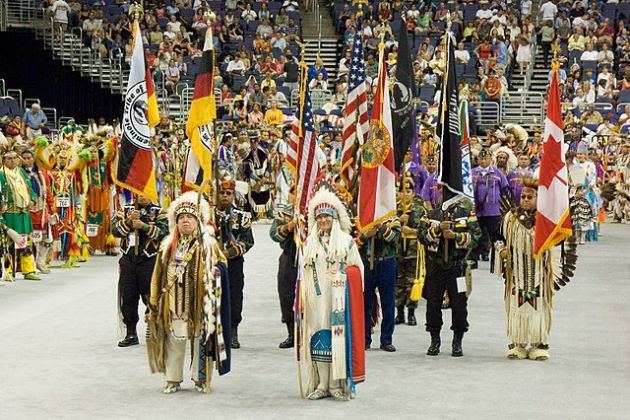Move FM Global News

Thousands gather in New Mexico for the largest powwow in North America
May 1, 2025ALBUQUERQUE, New Mexico: Thousands of people are gathering in New Mexico for a big event that celebrates Native American and Indigenous culture.
Dancers, musicians, and artists from around the world are taking part in the annual Gathering of Nations, known as the biggest powwow in North America.
The festival began this week with a colorful parade of dancers in the center of an arena. Many wore special outfits decorated with bells, feathers, beads, and bright colors. They danced to the beat of drums, each person attending for their own reasons.
“It’s not just for fun,” said Deshava Apachee, who is Mescalero Apache and Navajo. “It’s for healing, strength, and reconnecting.”
The event also includes choosing Miss Indian World and horse parades. Riders are judged on the quality of their outfits and their riding.
Powwows began in the 1800s, during a difficult time when Native tribes were forced off their lands by the U.S. government. Tribes came together and shared songs and dances, which became a tradition. Later, these gatherings were shown to settlers as entertainment, often misrepresenting Native culture.
The word “powwow” comes from the Algonquian word “pau wau,” which means “medicine man.” Over time, English speakers began using it to describe Native gatherings.
Today, prominent powwows like the Gathering of Nations include contests for dancing and drumming, with prize money. Outfits at these events are often modern and eye-catching, with sequins and bright decorations. However, for ceremonial dances, people wear traditional clothing that shows their tribal identity.
Warren Queton, a member of the Kiowa Tribe and a teacher, says it’s important to keep traditional ceremonies and commercial powwows separate. While powwows are public and festive, traditional dances are significant and connect people to their community and values.
Smaller powwows held in tribal areas help people return to their roots, reconnect with family, and pass on traditions to younger generations.
“There’s so much to learn from your community — your land, stories, language, and values,” Queton said. “These smaller dances help keep that alive.”
Even in modern powwows, tradition is still present. Dancers wear hand-made feathered bustles, beaded clothes, and fringed shawls — some outfits take months to create.
Artist Mateo Romero from Cochiti Pueblo worked with the U.S. Postal Service to create stamps showing powwow scenes. One shows a fancy shawl dance, with dancers twirling and moving with flowing tassels.
Romero said it was an honor to express the beauty and spirit of powwow culture through his art. “It’s full of energy, celebration, and power,” he said.


